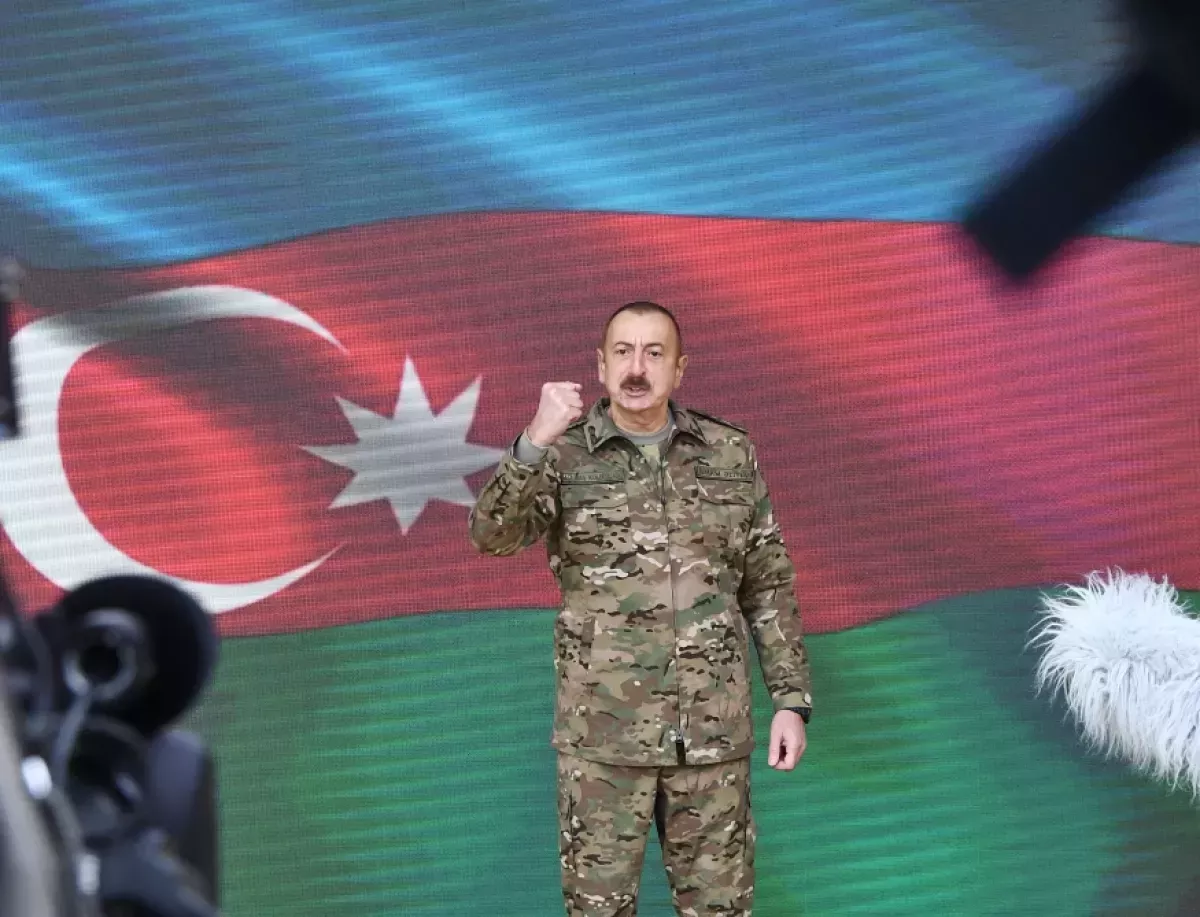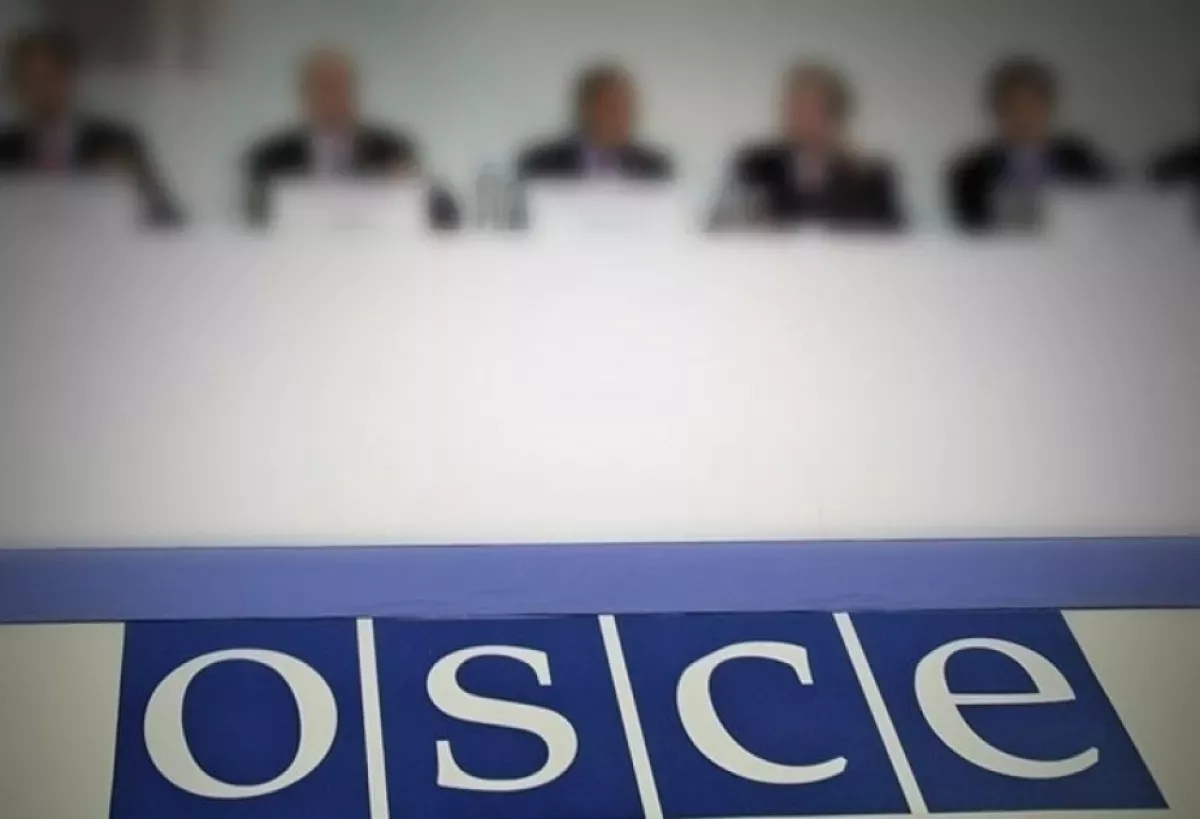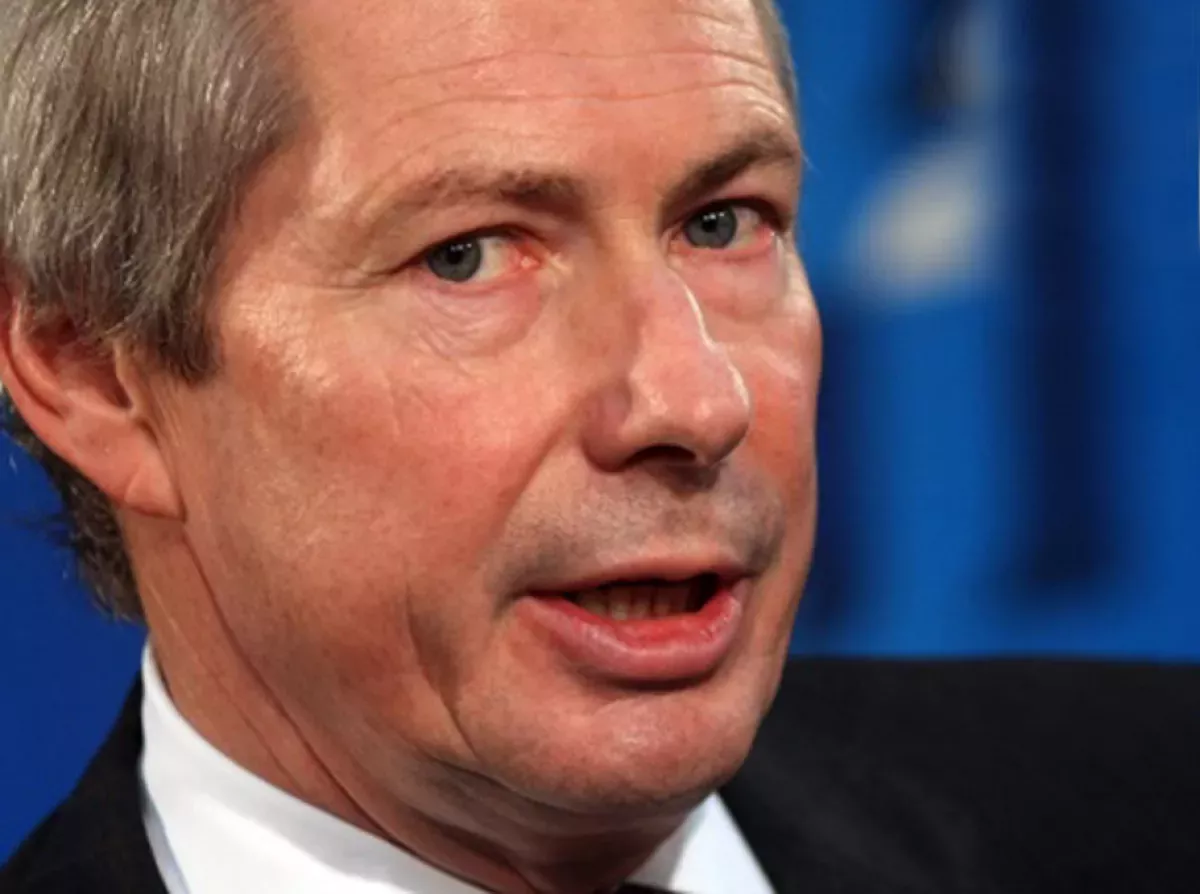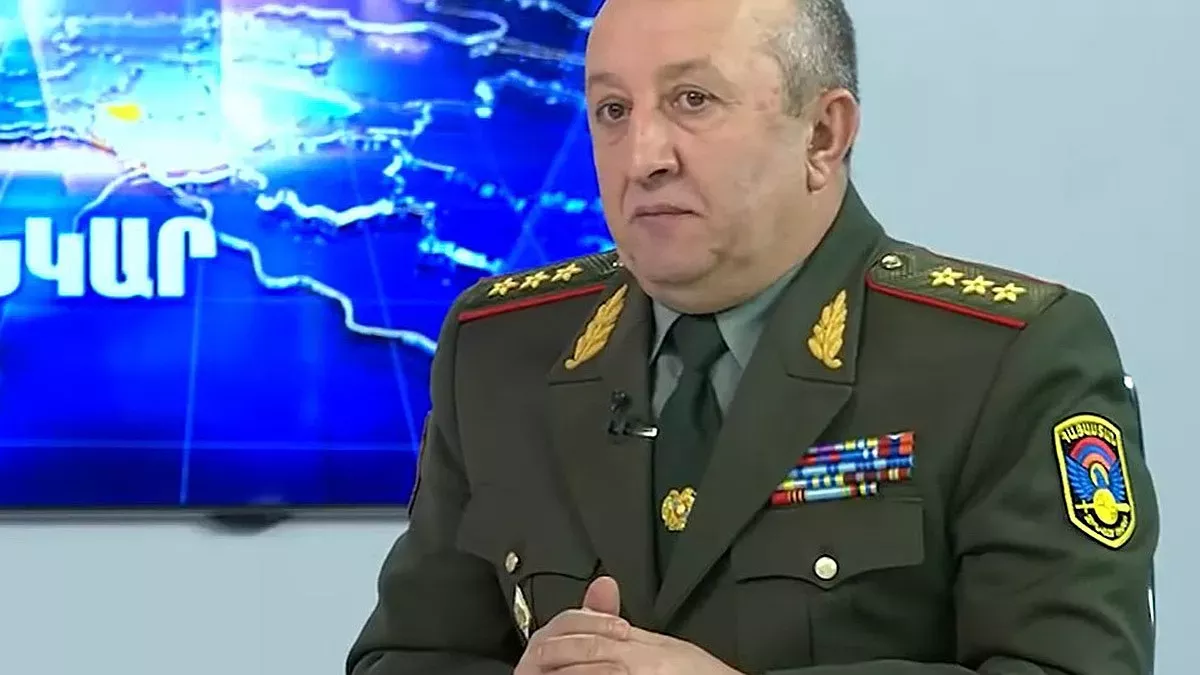Azerbaijan’s victory in the Patriotic War — a triumph over barbarism Forged through diplomacy, secured by strength
The independence that Azerbaijan gained in 1991 was burdened with the heavy weight of problems stemming from aggression by Armenian nationalists. It would not be an exaggeration to say that none of the former Soviet republics faced a challenge to their statehood as severe as Azerbaijan did. The issue was not only with nationalist and religious fanatics who unleashed war against their neighbours. Armenian nationalists were able to intertwine their expansionist projects with the policies of certain global imperialist powers, occupying nearly one-fifth of Azerbaijan’s territory. They and their patrons seemed to believe that these events were irreversible. However, the long-term efforts of the Azerbaijani people, embodied in the policies of their state, ensured the restoration of the country’s territorial integrity and the elimination of the consequences of imperialist policies in the region. The victory achieved in 2020 transformed the entire region from the Caspian to the Black Sea.
A nail in the skull of the South Caucasus
It is now clear that Armenian revanchists miscalculated in their plans to reverse their battlefield defeat through diplomatic intrigues and by drawing superpowers into regional processes. Even their desperate attempts to create the appearance of a so-called “catastrophe” failed, when radicals first obstructed the supply of goods to the population in the separatist-controlled territories by Azerbaijani authorities, and then pushed these people to relocate to Armenia instead of the integration offered to all those entitled to Azerbaijani citizenship.

As a result of the 2020 victory, complemented by the counterterrorist operation in September 2023, it is clear that Baku has put an end to this chapter. Moreover, building on these victories, the Azerbaijani government is working to restore the historically unified region, particularly through the opening of old and new communication routes and transport corridors. As evidenced by the developments around the Zangezur corridor and its international support, these efforts are effective, increasingly weakening the revanchist circles in Armenia.
Today, it may seem surprising that Armenian territorial expansion into the Karabakh region of Azerbaijan lasted for so long, and that the separatist entity survived for as many as three decades. The absurdity of these bloody projects is more than obvious when viewed soberly. After seizing the lands of their neighbors, Armenian extremists did not know what to do with them. It turned out that no one except the clueless fanatics was willing to settle on the stolen land, and even local residents of Armenian ethnicity were eager to leave this nationalist dystopia. In the end, the separatists simply began sowing the occupied territories with minefields and turning settlements into ruins.
Even Western media that sympathized with the separatists were regularly forced to report these realities. For example, lamenting the collapse of Armenian nationalists’ expansionist plans, the BBC also noted that in the early 1990s, Armenian fighters had completely burned down Lachin and later only “partially rebuilt and resettled” it. Instead of the seven to eight thousand pre-war residents who had been displaced or killed, the colonizers managed to settle only a few thousand ethnic Armenians in a city completely cleared of any cultural heritage they deemed undesirable.
Concluding its account of the desolate existence Lachin endured under occupation, the BBC quoted one of the colonists who had arrived from the U.S., who bluntly said: “Even with a population of 2,000, the city in Lachin barely made ends meet.” And this was a strategically crucial settlement for the separatists — let alone the others!

But the separatist entity did exist. This was largely because Armenian nationalists initially managed to align themselves with the agendas of several global powers. They began by providing services to the bloody General Secretary Gorbachev, who was trying to maintain his grip on power by using local radicals to pressure republican leaders across the USSR who disagreed with his policies.
However, Armenian nationalists quickly expanded their network of contacts and managed to “offer” their services in the South Caucasus to several global powers — as evidenced by the composition of the co-chairs of the so-called OSCE Minsk Group, whose work largely focused on finding ways to legitimize the bloody territorial expansion carried out by Armenian nationalists. By supporting the Karabakh separatists, these powers sought to expand their influence in the region and weaken Azerbaijan, which in the 1990s was rapidly establishing itself as a key oil and gas exporter. In pursuing these cynical imperialist objectives, the separatist project was an absurdity from the perspective of the South Caucasus, as it obstructed the development of both Azerbaijan and the region as a whole.
In this context, one is reminded of how Africans once described the creation of The Gambia by British colonizers — a narrow, tiny colony that split a historically unified region, turning it into an absurd patchwork of barriers and borders. They called it “a nail driven into the skull of Africa.” The separatist entity in Karabakh, though different in shape, became the same kind of nail in the skull of the South Caucasus. Removing that nail, however, took a long time.
Military strength was Baku’s final argument
It is now clear to everyone that, after 1994, the Azerbaijani leadership never paused in its efforts to restore the country’s territorial integrity. Neither Heydar Aliyev nor Ilham Aliyev ever lost sight of this goal, yet, unfortunately, they were sometimes subjected to unfair criticism on this matter, even after the process of strengthening the Azerbaijani army became evident in the 2000s.
At the same time, acting differently — with less patience and restraint — was impossible due to the intrigues and alliances between Armenian extremists and powerful external forces. A purely diplomatic solution was, by definition, unattainable.
What was needed was not just an army capable of defeating an enemy that had entrenched itself for decades in terrain ideally suited for long-term defence — mountains, dense vegetation, and access to international borders made any offensive extremely challenging. What was required was a military force capable of achieving this quickly and with minimal civilian casualties. Such a force was developed by the mid-2010s.
Even then, it was necessary to lay the diplomatic groundwork and wait for a window of opportunity in the international environment — a period when interested global powers would not intervene to save the Armenian extremists.
The opportunity to begin the final stages of the struggle to restore Azerbaijan’s territorial integrity arose in 2020, thanks to the decisiveness and accurate assessment of the situation by the Azerbaijani government. On one hand, Baku made every effort to avoid bloodshed, and the very military balance between Azerbaijan and Armenia could have given Armenian nationalists in Yerevan and in the occupied territories reason to reconsider. Moreover, to ensure the success of a military operation, Baku sought to avoid unnecessary displays of force, preferring to employ it only when absolutely necessary.

As James Warlick, who represented the United States in the OSCE Minsk Group until 2016, later recalled: “I was the chair during negotiations involving President Aliyev… I was surprised that both President Aliyev and the then-President of Armenia, Serzh Sargsyan, were able to speak to each other quite normally. I thought it was a very positive sign that the leaders of Armenia and Azerbaijan could negotiate on the complex issues of Nagorno-Karabakh.”
He never truly understood Aliyev, mistakenly interpreting his composure and measured style as a willingness to accept the injustice faced by the Azerbaijani people — an injustice that the world’s powers were attempting to legitimize.
But the President of Azerbaijan has never lacked decisiveness, both in diplomacy and in using force. While avoiding bloodshed, the first serious show of force to warn the Armenian side in 2016 was convincing yet restrained. Unfortunately, it went unheeded, and after the rise to power of the radically pro-Western Pashinyan, there emerged the threat that he would once again attempt to push through in his Euro-integration program a provision aimed at gradually legitimizing the seizure of Azerbaijani lands by Armenian nationalists.
Before the war, in August 2019, the Armenian Prime Minister — whose main and, arguably, only political program has always been to align Armenia with the collective West “by any means necessary” — began speaking openly in the language of territorial expansion.
The situation was further complicated by the prospect of Democrats coming to power in the United States, a party traditionally more susceptible to influence from Armenian lobbyists.
All of this made war inevitable. Yet the Azerbaijani leadership responded militarily without haste, waiting for a favorable international configuration. By 2020, global powers were not only preoccupied with the crisis caused by the coronavirus pandemic…
First and foremost, the Armenian lobby failed to secure intervention from Washington, as the United States was preoccupied with domestic issues. James Warlick, the former U.S. representative to the OSCE Minsk Group, acknowledged at the time: “At the moment, as you know, the U.S., unfortunately, is focused on the upcoming elections and other domestic matters. I say this because they should have played a more important role in resolving this potentially very dangerous situation, and at the highest level.”
The other two co-chairs of the Minsk Group attempted to intervene after the fighting began. Russian Foreign Minister Sergey Lavrov and French President Emmanuel Macron tried to block the Azerbaijani army and negotiate a ceasefire for the separatists. But both attempts were in vain — Russia was already too preoccupied with preparations for war in Ukraine, and France simply lacked the capacity to influence the situation.
Heroism and professionalism of the Azerbaijani Army amid the collapse of Armenian occupation forces
Thanks to long-term diplomatic and political preparation, Baku succeeded in reducing the separatist project to almost its true scale — a fanatic and increasingly criminalized nationalist movement. Of course, it could not be entirely dismissed, given that this movement not only controlled Armenian state structures at the time but also possessed significant transnational resources and a long-standing tradition of terrorism and provocations, operating in many countries for over a century and a half. It is hardly surprising, then, that both the Armenian army and the fighters of the separatist formations counted on holding their ground, relying on the natural advantages of the terrain in the Karabakh region of Azerbaijan and exploiting “humanitarian considerations.”

This required from the Azerbaijani military not just heroism, but extremely precise, skilled, and carefully scaled operations. They succeeded in this task — civilian casualties in the separatist-controlled territories were minimal. In 2020, even according to Armenian sources, 85 civilians were killed in the separatist-controlled areas, despite their attempts to provoke Baku into a brutal retaliation by killing a hundred civilians elsewhere in Azerbaijan.
During the counterterrorist operation, this ratio was 10 to 1. To look at another aspect: during the 2023 operation, more than two hundred militants and Armenian soldiers were eliminated, while only ten civilians lost their lives — a tragedy, of course, but in what other modern conflict can we find such a ratio of military to civilian casualties?
At the same time, by conducting operations carefully, the Azerbaijani army achieved rapid and brilliant results. In 2020, the conflict was over in just a month and a half. Yes, this victory came at a significant cost, with 2,906 martyrs giving their lives.
In 2023, the remnants of Armenian nationalist formations were neutralized in almost a single day. This was no simple task either, and 192 Azerbaijani soldiers sacrificed their lives for the sake of the future. Again, compare these numbers with civilian casualties to see that the Azerbaijani army was not fighting the civilian population, but conducting operations while doing everything possible to protect it.
It is difficult to reduce the lives and destinies of heroes and innocent civilians to mere numbers, replacing faces with statistics. Yet these figures must be recalled whenever one hears Armenian nationalists spout nonsense about “Turkic barbarism,” “bloodlust,” or the “impossibility of living alongside Azerbaijanis.” Remembering these numbers means acknowledging the torn human lives behind them. And it underscores that there can be no forgiveness for those who allowed the expansionist project of Armenian extremists to arise and flourish — including those outside the region.
In 2023, the remnants of Armenian nationalist formations were neutralized in almost a single day. This, too, was no easy task, and 192 Azerbaijani soldiers gave their lives in the process, sacrificing themselves for the sake of the future. Once again, compare these numbers with civilian casualties to see that the Azerbaijani army was not fighting against the civilian population, but conducting operations while doing everything possible to protect it.
It is difficult to reduce the lives and destinies of heroes and innocent civilians to mere numbers, replacing faces with statistics. Yet these figures must be remembered every time Armenian nationalists spout nonsense about “Turkic barbarism,” “bloodlust,” or the “impossibility of living alongside Azerbaijanis.” It is important to recall that behind these numbers are torn human lives. And for this reason, there can be no forgiveness for those who allowed the expansionist project of Armenian extremists to arise and flourish — including those outside the region.
The role of these external powers manifested itself repeatedly. Without their support, the separatists could never have achieved what they did, as the true attitude of Armenians toward them became evident during the war. Even before their defeat, Armenian servicemen began expressing their opposition to the expansionist projects with their feet.

As General-Colonel Movses Hakobyan, head of the Armenian Ministry of Defense’s control service, recounted upon his retirement, by the fifth day of the war the number of deserters had reached 1,500, and they had to be hidden to prevent panic. Meanwhile, former chief military commissar of Armenia, Major-General Levon Stepanyan, stated that more than 10,000 people had fled the Armenian army in total, making it impossible to even punish them!
For comparison, the armed formations of the separatists numbered 18,000–20,000 fighters, while the Armenian army had fewer than 45,000 soldiers.
The civilian population was no more militant, beginning to relocate as soon as it became clear that the Armenian side had lost the war. And let us not forget — the relocation of civilians from Azerbaijani territories under separatist control after 2020, and especially in 2023, cannot be compared to the forced expulsion in the 1990s of not only Azerbaijanis but also other non-Armenian citizens of Azerbaijan, carried out deliberately by Armenian fighters.

In the early 1990s, Azerbaijanis were forced to flee under a real threat of genocide, exemplified by the massacre in Khojaly, not to mention the burning and deliberate shelling of other settlements. Nothing of the sort occurred in 2020 or 2023 in the Azerbaijani territories under separatist control — as even the civilian casualty figures show, for those who might doubt the Azerbaijani government’s statements at the time about the possibility of reintegration.
In summary, Armenian nationalists killed non-Armenians in the 1980s and 1990s, tearing the region apart to pursue their own fantasies. Azerbaijan refused to follow them down this path of barbarism. In restoring its territorial integrity, Azerbaijan chose to build a more humane future for itself and the entire region. Today’s Victory Day therefore marks not only the liberation of Azerbaijani lands but also the triumph of the principles of justice and sovereignty over primitive xenophobia and subservience to distant empires.








